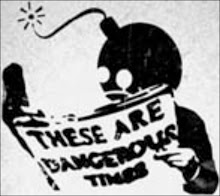
War and the Tragedy of the Commons, Part 5
By 2003, reports were surfacing of cancer clusters and birth disorders in conflict areas of the Balkans and Iraq, raising fears about human exposure to depleted uranium (DU) and its fate and transport in war environments. Gulf War Syndrome, a catchall for mysterious and disabling symptoms and conditions suffered by nearly 40 percent of 540,000 veterans of the three-week ground war (which killed fewer than 200 US soldiers), remained an unyielding conundrum. A colleague and I prepared a fact sheet on depleted uranium, given its first use in the 1991 Persian Gulf War and growing use by the United States and Britain in subsequent wars. We labored in a meager research environment and detected an unsettling complacency around the question of environmental health impacts of DU munitions.
Little governmental research on Gulf War veterans was being conducted other than a small study on 29 veterans with DU metal shrapnel fragments in their bodies, cancer cluster reports were dismissed as anecdotal and alarmist, and DU was pigeonholed as "weak" and "feeble" radiation with no predictable risk. Thus, the US decision to use DU in weapons was made in an environment of uncertainty and intentional ignorance about the health risks to those exposed in conflict and post-conflict situations. Accustomed to policing and polluting everyone's backyard, the Department of Defense (DoD) still maintains a shroud of secrecy around depleted uranium, as it has with abandoned hazardous waste contaminating military bases and countries in which our government has waged war...
Continue reading
H. Patricia Hynes @'truthout'










And yet a few micro-curie in Japan send people into a panic...
ReplyDelete